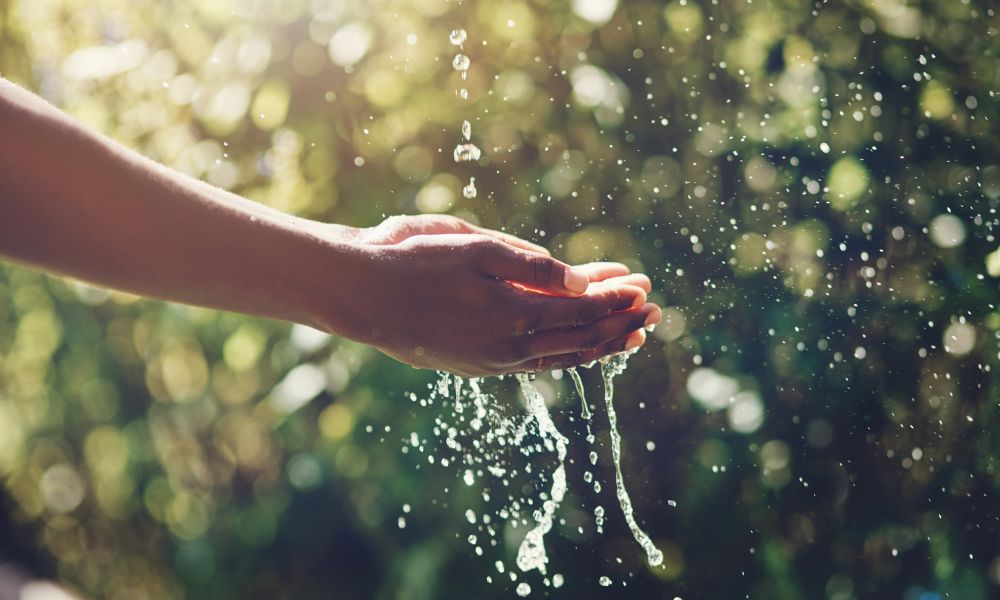While the earth has 1.335 billion cubic kilometres of water, only 0.001% of it is accessible for human use. And approximately 70% is used for agricultural purposes.
According to the World Health Organisation and Unicef, 2.2 billion still live without safely managed drinking water, including 115 million people who drink surface water, putting them at risk of contracting a number of serious diseases.
More than 3 billion people worldwide depend on water that crosses national borders. Yet, only 24 countries have cooperation agreements for all their shared water.
Roughly half of the world’s population is experiencing severe water scarcity for at least part of the year, says a report by the Intergovernmental Panel on Climate Change (IPCC).
The Sustainable Development Goals, launched in 2015, include a target to ensure everyone has access to safe water by 2030, making water a key issue in the fight to eradicate extreme poverty. In 1993, the United Nations General Assembly officially designated March 22 as World Water Day. World Water Day is coordinated by UN-Water in collaboration with governments and partners.
With many countries, experiencing some of the worst droughts on record, there has never been more urgent a time to safeguard our precious water supplies, and help strengthen our water wealth for the generations ahead.
World Water Day celebrates water and inspires action to tackle the global water crisis. The theme of World Water Day 2024 is ‘Water for Peace’.
The key messages UN is sharing include:
- Water can create peace or spark conflict. When water is scarce or polluted, or when people struggle for access, tensions can rise. By cooperating on water, we can balance everyone’s water needs and help stabilize the world.
- Prosperity and peace rely on water. As nations manage climate change, mass migration and political unrest, they must put water cooperation at the heart of their plans.
- Water can lead us out of crisis. We can foster harmony between communities and countries by uniting around the fair and sustainable use of water – from United Nations conventions at the international level, to actions at the local level.
Water For life has some handy tips around improving your water use around the home, including not rinsing dishes before they are placed in the dishwasher, installing flow restrictors and checking for leaks.
The Food Tank shares with us their seven strategies for reducing water waste in the food system:
1. Eating Less Meat
According to Sandra Postel of the Global Water Policy Project, it takes roughly 3,000 litres of water to meet one person’s daily dietary need. The amount of water needed to produce one kilogram of red meat can range from 13,000 to 43,000 litres of water; poultry requires about 3,500 litres of water; and pork needs about 6,000 litres. Eating more meat-free meals, even one or two days a week, can help conserve water resources.
2. Using intercropping, agroforestry, and cover crops
Soil health is critical to water conservation. Diversifying farms by including cover crops, planting trees on farms, and intercropping can help keep nutrients and water in the soil, protecting plants from drought and making sure that every drop of water delivered by rainfall or irrigation can be utilised.
3. Implementing micro-irrigation
Approximately 60% of water used for irrigation is wasted. Drip irrigation methods can be more expensive to install, but can also be 33 per cent to 40 per cent more efficient, carrying water or fertilisers directly to plants and roots.
4. Improving Rainwater Harvesting
Since the 1980s, according to the International Food Policy Research Institute, farmers in Burkina Faso have been modifying traditional planting pits known as zai, making them deeper and wider and adding organic materials. As a result, the pits retain rainwater longer, helping farmers to increase yields even in years of low rainfall.
5. Using mobile technology to save water
Santosh Ostwal is an innovator and entrepreneur in India who has developed a system that allows farmers to use mobile phones to turn their irrigation systems on and off remotely. This helps reduce the amount of water and electricity wasted on watering fields that are already saturated.
6. Planting perennial crops
Perennial crops protect the soil for a greater length of time than annual crops, which reduces water loss from runoff. According to a report from the Land Institute, “annual grain crops can lose five times as much water and 35 times as much nitrate as perennial crops.”
7. Practicing Soil Conservation
Soil conservation techniques, including no-till farming, can help farmers to better utilise the water they have available. According to the U.N. Food and Agriculture Organisation (FAO), studies have shown that no-till techniques improve water-retention capacity and improve water use efficiency in crops.
Be sure to visit the official World Water Day website for more details about the day’s events, including activities in your community and tips for reducing your water footprint. You can also learn more about water issues from the Barilla Centre for Food and Nutrition, the Global Water Policy Project, Food and Water Watch, and the Natural Resources Defence Council (NRDC).







